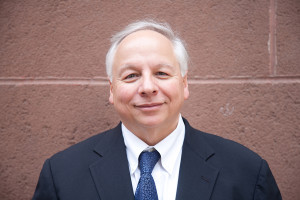The reconstruction of the Massachusetts Turnpike interchange in Allston has the potential to be one of the most dynamic, transformational opportunities we have had in decades for Allston and Cambridge, for Boston and Harvard universities, and for Greater Boston as a whole – but success turns on getting the design and construction process right.
MassDOT is now evaluating three approaches to replacing the decaying, 50-year-old viaduct that carries Turnpike traffic in and out of downtown Boston, as well as to and from Cambridge and Allston/Brighton. This project also offers the opportunity to upgrade dozens of acres of former railroad yard into a new neighborhood connected to a revitalized Charles River.
Of the three options under study, A Better City and other members of the stakeholder community believe one, which we’ll describe more fully below, clearly is the best choice to control cost, deliver significant environmental benefits and minimize construction disruption.
First, some quick background: MassDOT recently released its draft environmental review on three different options for replacing the viaduct and completing this mega-project. Option 1 would reconstruct an elevated highway for the Turnpike, costing $1.05 billion. Option 2 would build the Turnpike at ground level, but elevate two rail lines at a price of $1.2 billion. The third proposal would replace all transportation functions with new ground-level infrastructure, at an estimated cost of $983 million.
A Better City believes this third plan, the “all at ground level” option, is clearly the best option and the clear choice for transportation, the environment, future redevelopment and controlling construction risks, as well as costs to taxpayers and tollpayers.
Minimal Commuter Disruption
More than 100,000 motorists and commuter rail riders pass through this area every day. Compared to the other two options that require constructing elevated highway or elevated railways structures, the “all at ground level” option will require a shorter construction schedule for highway elements. It eliminates the need for costly, complex temporary viaducts during construction and allows for a simpler shift of traffic from the current crumbling viaduct onto a new expressway. Engineers project that a viaduct replacement could snarl and delay the western commute to and from downtown Boston at least six full years – a level of economic and social disruption that we must avoid.
We should also learn from Boston’s positive experience with removing, not creating, elevated deck structures. The elimination of the elevated Central Artery reconnected large parts of downtown Boston with the waterfront visually and physically to inspire revitalizing development along the Greenway. If we eliminate an elevated infrastructure in Allston, we can likewise reconnect that neighborhood and Boston University with the Charles River and open the door to creation of an even more beautiful cityscape and neighborhood for generations to come.
The “all at ground level” plan provides environmental benefits by avoiding significant construction in the Charles River; replacing the rail bridge over Soldiers Field Road allows for a wider esplanade for bicyclist and pedestrians west of the BU Bridge. The flat profile reduces truck noise and emissions by eliminating the grade up to the viaduct. This option also eliminates today’s boardwalk detour at the BU Bridge over the river for people walking, jogging, rollerblading and bicycling on the Dr. Paul Dudley White riverfront path.
Lowest Cost Plan For Taxpayers
The most compelling argument for the “all on the ground” option for many will be that even with these superior transportation, environmental and place-making benefits, it is also the lowest-cost option for taxpayers and tollpayers. Building new highway at ground level instead of on viaducts is much less expensive, as studies of comparable recent projects elsewhere demonstrate, and lifecycle costs of at-grade highways are lower than viaduct structures that require more intensive annual maintenance and must undergo full reconstruction sooner. Savings from the “all at ground level” option could be applied towards funding and accelerating the new West Station commuter rail and transit hub, which MassDOT currently doesn’t project to be operational until 2040. ABC agrees with all who are urging this critical intermodal transit component of the development be jointly built with the new highway in the project’s first phase, ensuring this new Allston neighborhood is truly a transit-oriented development.
The process for a future Allston Interchange has produced three thoughtful approaches, and engaged a wide range of people who have invested literally thousands of hours in brainstorming and evaluating how best to seize this historic opportunity. Our conclusion is that for limiting commuter disruption, maximizing benefits for pedestrians, bicyclists and the environment, and keeping the project as affordable as possible for taxpayers and tollpayers, the “all at ground level” option is the best path for transforming this part of Greater Boston. We hope MassDOT will soon agree.
Rick Dimino is president and CEO of A Better City.






